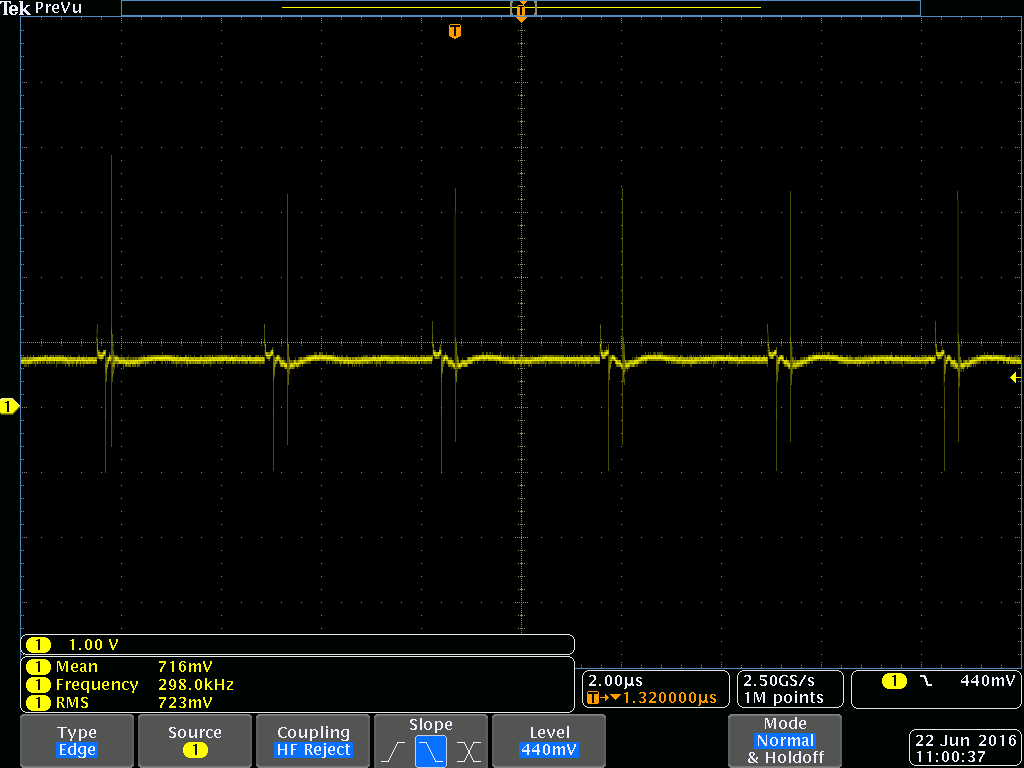I'm trying to use the LM46000 to generate ~11V from a nominal 14.4V supply.
The has some switching action happening, but the switch pin doesn't 'appear to swing to Vin or Gnd like I would expect.
The output only goes to ~0.6V. When power is 1st applied, the output goes to approximately 0.58V, then climbs over a period of approximately 10 seconds to ~0.65V.
Input current is ~ 130-140mA, LM46000 gets warm (eventually too warm to hold your finger on the top, even with the 'thermal vias' under the DAP).
The FB pin appears to have the 'correct' ratio of Vout present (~1/11th). I've tried lowering the Rfbt and Rfbb each by a factor of 10 from those shown below with no effect. Input current remains the same over an input range of ~ 8V - 20V (at 8V, it drops to approximately 0).
There is no load on the part - the load is a module not yet installed on the PCB. I haven't yet tried a capacitor in parallel with the 'upper' feedback resistor - can't see how that would solve this particular problem.



